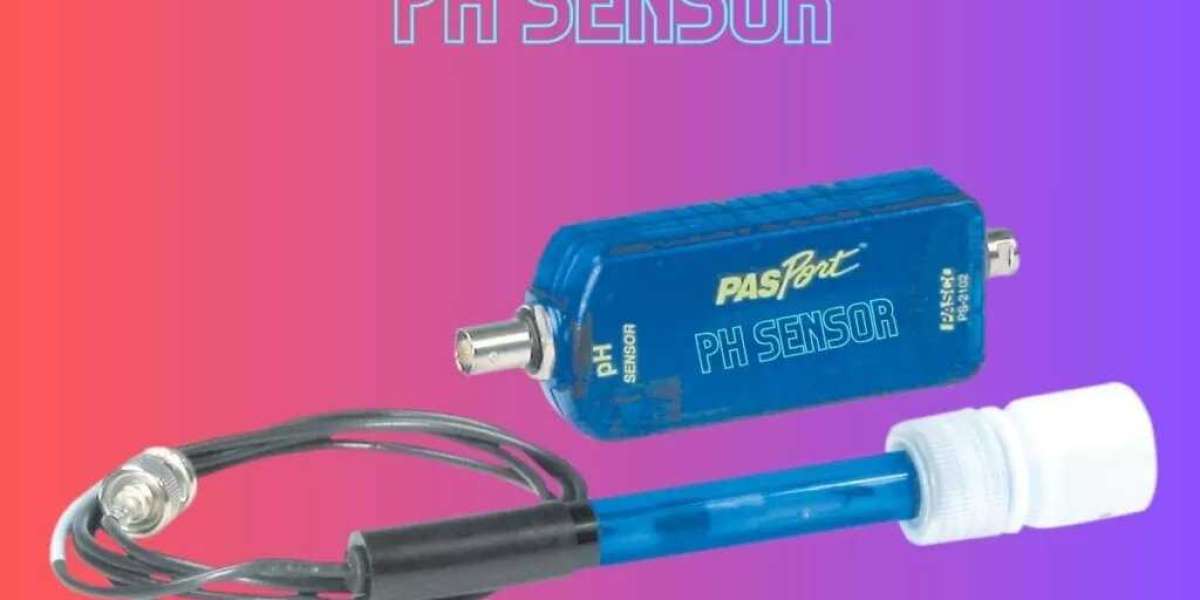In this blog, we'll explore what pH sensors are, how they work, their applications, and the future of pH measurement technology.
What is a pH Sensor?
A pH sensor, or pH electrode, is a device used to measure the acidity or alkalinity of a solution. It produces a voltage that correlates with the concentration of hydrogen ions (H⁺) in the solution, allowing for precise determination of pH levels. The pH scale ranges from 0 to 14, with values below 7 indicating acidity, above 7 indicating alkalinity, and 7 being neutral.
How Do pH Sensors Work?
At the heart of every pH sensor is a glass electrode that responds to changes in pH. This electrode is typically made of a special glass membrane that is sensitive to hydrogen ions. When the glass membrane comes into contact with a solution, a potential difference is generated between the inside and outside of the electrode. This potential difference is measured and converted into a pH value by a connected pH meter or controller.
Most pH sensors also include a reference electrode, which provides a stable reference point for accurate measurements. The reference electrode is filled with a stable electrolyte solution, typically potassium chloride (KCl), ensuring that the readings remain consistent even in varying conditions.
Applications of pH Sensors
pH sensors are utilized in a wide range of industries and applications, including:
Water Treatment: Monitoring and controlling the pH of drinking water and wastewater is crucial for maintaining water quality and ensuring compliance with environmental regulations.
Agriculture: Soil pH is a critical factor influencing nutrient availability to plants. Farmers use pH sensors to optimize soil conditions for crop growth and yield.
Food and Beverage Industry: pH measurement is essential for quality control in food processing, fermentation, and beverage production. Maintaining the right pH levels ensures product safety and consistency.
Chemical Manufacturing: pH sensors are used to monitor and control chemical reactions, ensuring product quality and safety in the production of chemicals and pharmaceuticals.
Aquaculture: Monitoring the pH levels in fish farms is vital for maintaining a healthy aquatic environment and ensuring the well-being of the fish.
The Future of pH Measurement Technology
Advancements in technology are driving innovation in pH measurement. Wireless pH sensors, for example, allow for remote monitoring and data collection, making it easier to manage processes in real-time. Miniaturization of sensors is also making them more accessible for smaller applications, such as home aquariums and personal health monitoring devices.
Moreover, integrating pH sensors with IoT (Internet of Things) technology enables more sophisticated data analytics and automation in various industries. These developments not only enhance the accuracy and reliability of pH measurements but also facilitate predictive maintenance and process optimization.
Conclusion
pH sensors are indispensable tools in numerous applications, providing vital information about the acidity or alkalinity of solutions. Their importance spans various industries, from agriculture to water treatment and beyond. As technology continues to evolve, pH measurement will become even more accurate and accessible, ensuring that we can better monitor and control our environment and processes. Whether you're a scientist, farmer, or industrial operator, understanding pH sensors is crucial for optimizing performance and ensuring quality in your work.








